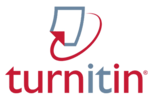Chemistry Learning Revolution: Problem Based Learning to Improve the Responsible Character Students in Atomic Structure Material
Abstract
Purpose of the Study: This study aims to analyze the impact of the Problem-Based Learning (PBL) model on the development of students’ responsibility character in Chemistry education, with a specific focus on the challenging topic of atomic structure among 11th-grade high school students. Amid increasing concerns about character education in STEM subjects, this study seeks to fill the gap by exploring how active learning models influence affective outcomes alongside cognitive achievement.
Methodology: A mixed-methods explanatory design was employed, incorporating a quasi-experimental approach with pretest-posttest control groups. Quantitative data were collected through self-assessment questionnaires, peer evaluations, and teacher observation sheets, while qualitative insights were gathered via semi-structured interviews and thematic analysis of student reflections. The triangulation of data sources provided a comprehensive view of how PBL implementation affects student responsibility.
Main Findings: The findings revealed that students in the experimental group demonstrated significant improvements in their responsibility character compared to the control group. Higher posttest scores reflected positive behavioral changes in engagement, discipline, and task accountability during Chemistry learning activities. Qualitative data further supported that PBL encouraged students to take ownership of their learning process, collaborate effectively, and complete tasks with greater autonomy and diligence.
Novelty/Originality of this Study: This research offers a novel perspective by applying PBL not only as a cognitive learning strategy but also as a tool for character development in complex Chemistry topics. It advances the understanding of integrative pedagogical models that simultaneously nurture academic proficiency and essential life skills, particularly responsibility, in secondary science education.
References
N. Komariah and I. Nihayah, “Improving the personality character of students through learning islamic religious education,” At-tadzkir Islam. Educ. J., vol. 2, no. 1, pp. 65–77, 2023, doi: 10.59373/attadzkir.v2i1.15.
H. Wang, X. Gai, and S. Li, “A person-centered analysis of meaning in life, purpose orientations, and attitudes toward life among Chinese Youth,” Behav. Sci. (Basel)., vol. 13, no. 9, 2023, doi: 10.3390/bs13090748.
A. P. Rahayu and Y. Dong, “The relationship of extracurricular activities with students’ character education and influencing factors: a systematic literature review,” AL-ISHLAH J. Pendidik., vol. 15, no. 1, pp. 459–474, 2023, doi: 10.35445/alishlah.v15i1.2968.
H. Mansur and A. H. Utama, “The evaluation of appropriate selection learning media at junior high school,” Indones. J. Instr. Media Model, vol. 3, no. 1, p. 17, 2021, doi: 10.32585/ijimm.v3i1.1401.
O. Arifudin and H. Raza, Ali, “Teacher personality competence in building the character of students,” Int. J. Educ. Digit. Learn., vol. 1, no. 1, pp. 5–12, 2022.
S. Em, N. Nun, and S. Phann, “Qualities, personal characteristics, and responsibilities of qualified teachers in the 21st century,” Cambodian J. Educ. Res., vol. 1, no. 2, pp. 49–63, 2021, doi: 10.62037/cjer.2021.01.02.05.
N. Kurniati and M. Y. M. El-Yunusi, “Methods for cultivating students’ personality and morals through islamic religious education,” Bull. Sci. Technol. Soc., vol. 2, no. 2, pp. 25–30, 2023.
A. Cocca, F. E. Verdugo, L. T. R. Cuenca, and M. Cocca, “Effect of a game-based physical education program on physical fitness and mental health in elementary school children,” Int. J. Environ. Res. Public Health, vol. 17, no. 13, pp. 1–13, 2020, doi: 10.3390/ijerph17134883.
Herpratiwi and A. Tohir, “Learning interest and discipline on learning motivation,” Int. J. Educ. Math. Sci. Technol., vol. 10, no. 2, pp. 424–435, 2022, doi: 10.46328/ijemst.2290.
I. S. Chaudhry, S. A. M. Sarwary, G. A. El Refae, and H. Chabchoub, “Time to revisit existing student’s performance evaluation approach in higher education sector in a new era of ChatGPT — a case study,” Cogent Educ., vol. 10, no. 1, 2023, doi: 10.1080/2331186X.2023.2210461.
C. A. Wolters and A. C. Brady, “College students’ time management: a self-regulated learning perspective,” Educ. Psychol. Rev., vol. 33, no. 4, pp. 1319–1351, 2021, doi: 10.1007/s10648-020-09519-z.
N. S. Alotaibi and A. H. Alshehri, “Prospers and obstacles in using artificial intelligence in Saudi Arabia higher education institutions—the potential of AI-based learning outcomes,” Sustain., vol. 15, no. 13, 2023, doi: 10.3390/su151310723.
I. K. Biney, “Adult education and entrepreneurship: getting young adults involved,” J. Innov. Entrep., vol. 12, no. 1, 2023, doi: 10.1186/s13731-023-00277-0.
Y. Sun and L. Liu, “Structural equation modeling of university students’ academic resilience academic well-being, personality and educational attainment in online classes with Tencent Meeting application in China: investigating the role of student engagement,” BMC Psychol., vol. 11, no. 1, pp. 1–18, 2023, doi: 10.1186/s40359-023-01366-1.
L. Patra, “Value education: eastern and western human value and virtues,” J. Indian Counc. Philos. Res., vol. 39, no. 2, pp. 69–84, 2022, doi: 10.1007/s40961-022-00281-x.
M. Nkadimeng and P. Ankiewicz, “The affordances of minecraft education as a game-based learning tool for atomic structure in junior high school science education,” J. Sci. Educ. Technol., vol. 31, no. 5, pp. 605–620, 2022, doi: 10.1007/s10956-022-09981-0.
H. Rahman, S. A. Wahid, F. Ahmad, and N. Ali, “Game-based learning in metaverse: Virtual chemistry classroom for chemical bonding for remote education,” Educ. Inf. Technol., pp. 19595–19619, 2024, doi: 10.1007/s10639-024-12575-5.
W. Tarng, Y. Tseng, and K. Ou, “Structures and chemical equilibrium in high school chemistry,” System, vol. 10, pp. 1–23, 2022.
A. Marougkas, C. Troussas, A. Krouska, and C. Sgouropoulou, “Virtual reality in education: a review of learning theories, approaches and methodologies for the last decade,” Electron., vol. 12, no. 13, 2023, doi: 10.3390/electronics12132832.
K. A. Walker and K. E. Koralesky, “Student and instructor perceptions of engagement after the rapid online transition of teaching due to COVID-19,” Nat. Sci. Educ., vol. 50, no. 1, 2021, doi: 10.1002/nse2.20038.
A. Bağrıacık Yılmaz and S. Karataş, “Why do open and distance education students drop out? Views from various stakeholders,” Int. J. Educ. Technol. High. Educ., vol. 19, no. 1, 2022, doi: 10.1186/s41239-022-00333-x.
E. P. L. Emanuel, A. Kirana, and A. Chamidah, “Enhancing students’ ability to solve word problems in Mathematics,” J. Phys. Conf. Ser., vol. 1832, no. 1, 2021, doi: 10.1088/1742-6596/1832/1/012056.
A. Abdurrahmansyah, H. Sugilar, I. Ismail, and D. Warna, “Online learning phenomenon: from the perspective of learning facilities, curriculum, and character of elementary school students,” Educ. Sci., vol. 12, no. 8, 2022, doi: 10.3390/educsci12080508.
L. H. Tran and C. Moskovsky, “Students as the source of demotivation for teachers: a case study of Vietnamese university EFL teachers,” Soc. Psychol. Educ., vol. 25, no. 6, pp. 1527–1544, 2022, doi: 10.1007/s11218-022-09732-4.
A. S. A. Ghani, A. F. A. Rahim, M. S. B. Yusoff, and S. N. H. Hadie, “Effective learning behavior in problem-based learning: a scoping review,” Med. Sci. Educ., vol. 31, no. 3, pp. 1199–1211, 2021, doi: 10.1007/s40670-021-01292-0.
Ö. V. Yaz and M. A. Kurnaz, “Comparative analysis of the science teaching curricula in Turkey,” SAGE Open, vol. 10, no. 1, 2020, doi: 10.1177/2158244019899432.
K. Smith et al., “Principles of Problem-Based Learning (PBL) in STEM education: using expert wisdom and research to frame educational practice,” Educ. Sci., vol. 12, no. 10, 2022, doi: 10.3390/educsci12100728.
N. Silma et al., “A comprehensive review of Project-Based Learning (PBL): Unravelling its aims, methodologies, and implications,” J. Educ. Soc. Commun. Stud., vol. 1, no. 1, pp. 9–18, 2023.
W. T. Ummah and Yohamintin, “Integrating scientific attitude to realize pancasila learner profile in science learning,” Integr. Sci. Educ. J., vol. 6, no. 1, pp. 15–23, 2025, doi: 10.37251/isej.v6i1.1318.
E. Ahdhianto, Marsigit, Haryanto, and Y. Nurfauzi, “Improving fifth-grade students’ mathematical problem-solving and critical thinking skills using problem-based learning,” Univers. J. Educ. Res., vol. 8, no. 5, pp. 2012–2021, 2020, doi: 10.13189/ujer.2020.080539.
L. Tarhan, H. Ayar-Kayali, R. O. Urek, and B. Acar, “Problem-based learning in 9th grade chemistry class: ‘intermolecular forces,’” Res. Sci. Educ., vol. 38, no. 3, pp. 285–300, 2008, doi: 10.1007/s11165-007-9050-0.
L. Wijnia, G. Noordzij, L. R. Arends, R. M. J. P. Rikers, and S. M. M. Loyens, The effects of problem-based, project-based, and case-based learning on students’ motivation: a meta-analysis, vol. 36, no. 1. Springer US, 2024. doi: 10.1007/s10648-024-09864-3.
G. Lampropoulos and Kinshuk, Virtual reality and gamification in education: a systematic review, vol. 72, no. 3. Springer US, 2024. doi: 10.1007/s11423-024-10351-3.
D. T. K. Ng, J. K. L. Leung, S. K. W. Chu, and M. S. Qiao, “Conceptualizing AI literacy: An exploratory review,” Comput. Educ. Artif. Intell., vol. 2, p. 100041, 2021, doi: 10.1016/j.caeai.2021.100041.
G. Maheshwari, K. L. Kha, and A. R. A. Arokiasamy, Factors affecting students’ entrepreneurial intentions: a systematic review (2005–2022) for future directions in theory and practice, vol. 73, no. 4. Springer International Publishing, 2023. doi: 10.1007/s11301-022-00289-2.
F. Erdogan, “Effect of cooperative learning supported by reflective thinking activities on students’ critical thinking skills,” Eurasian J. Educ. Res., vol. 2019, no. 80, pp. 89–112, 2019, doi: 10.14689/ejer.2019.80.5.
R. Fauzana, J. A. Dahlan, and A. Jupri, “The influence of realistic mathematics education (RME) approach in enhancing students’ mathematical literacy skills,” J. Phys. Conf. Ser., vol. 1521, no. 3, pp. 0–5, 2020, doi: 10.1088/1742-6596/1521/3/032052.
Y. Wen et al., “Integrating augmented reality into inquiry-based learning approach in primary science classrooms,” Educ. Technol. Res. Dev., vol. 71, no. 4, pp. 1631–1651, 2023, doi: 10.1007/s11423-023-10235-y.
A. Orhan, “Investigating the effectiveness of problem based learning on academic achievement in EFL classroom: a meta-analysis,” Asia-Pacific Educ. Res., vol. 34, no. 2, pp. 699–709, 2024, doi: 10.1007/s40299-024-00889-4.
I. A. Rizki and N. Suprapto, “Project-oriented problem-based learning through SR-STEM to foster students’ critical thinking skills in renewable energy material,” J. Sci. Educ. Technol., vol. 33, no. 4, pp. 526–541, 2024, doi: 10.1007/s10956-024-10102-2.
J. I. Rotgans and H. G. Schmidt, “Cognitive engagement in the problem-based learning classroom,” Adv. Heal. Sci. Educ., vol. 16, no. 4, pp. 465–479, 2011, doi: 10.1007/s10459-011-9272-9.
Copyright (c) 2025 Haryanto Haryanto, Yusnidar Yusnidar, Harizon Harizon, Fuldiaratman Fuldiaratman, Elza Triani, Sri Wina Oktavia, Kowit Kittiwutthisakdi

This work is licensed under a Creative Commons Attribution 4.0 International License.
Authors who publish with this journal agree to the following terms:
- Authors retain copyright and acknowledge that the Integrated Science Education Journal is the first publisher licensed under a Creative Commons Attribution 4.0 International License.
- Authors are able to enter into separate, additional contractual arrangements for the non-exclusive distribution of the journal's published version of the work (e.g., post it to an institutional repository or publish it in a book), with an acknowledgment of its initial publication in this journal.
- Authors are permitted and encouraged to post their work online (e.g., in institutional repositories or on their website) prior to and during the submission process, as it can lead to productive exchanges and earlier and greater citation of published work.








.png)
.png)





